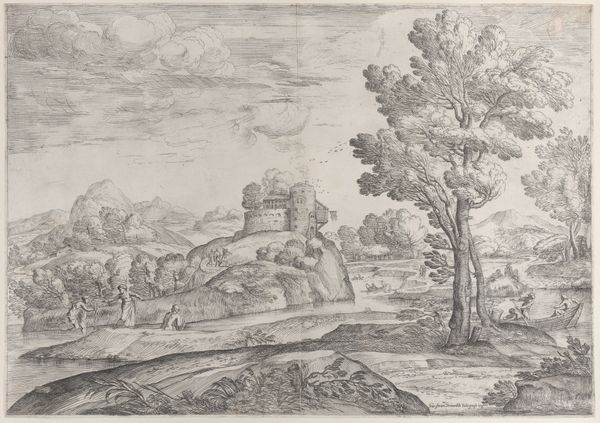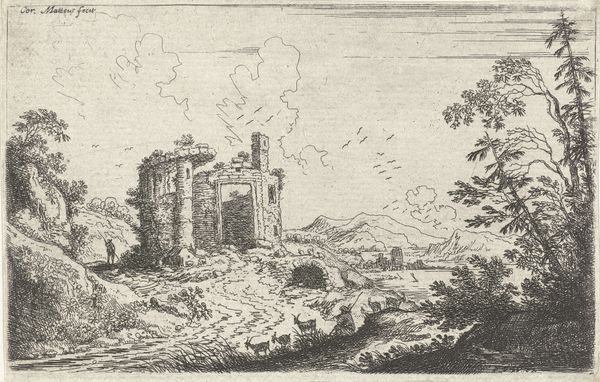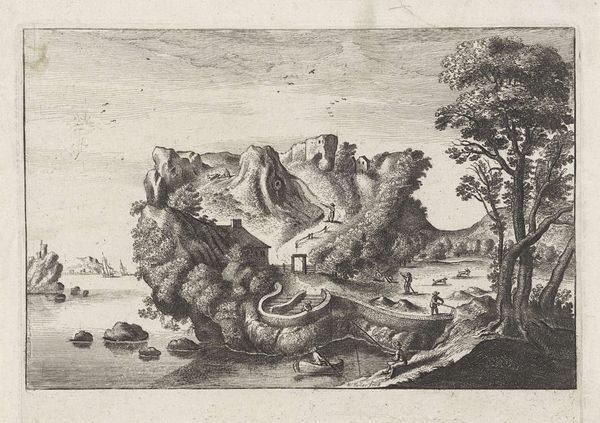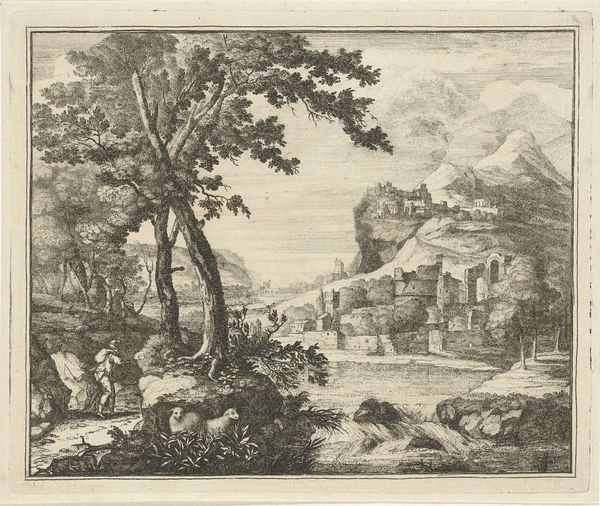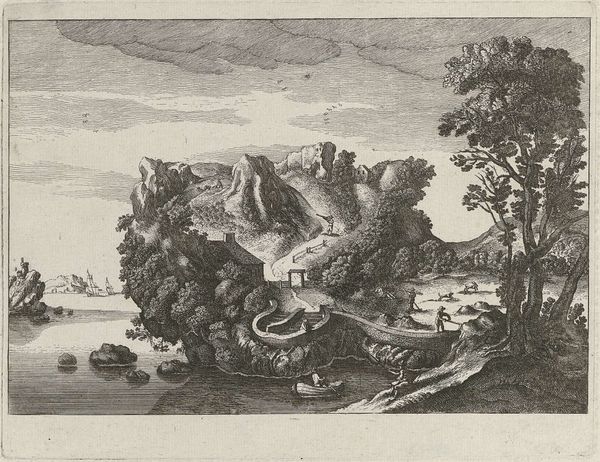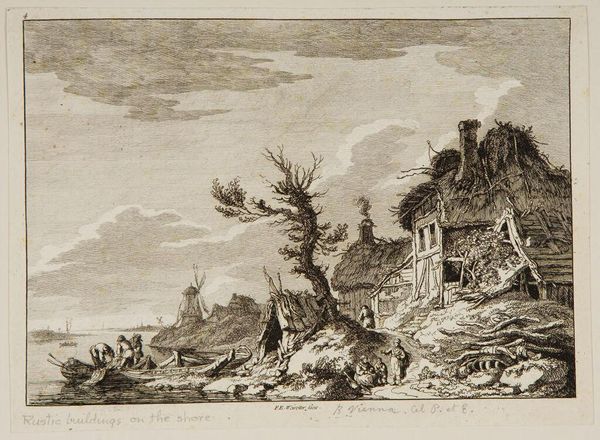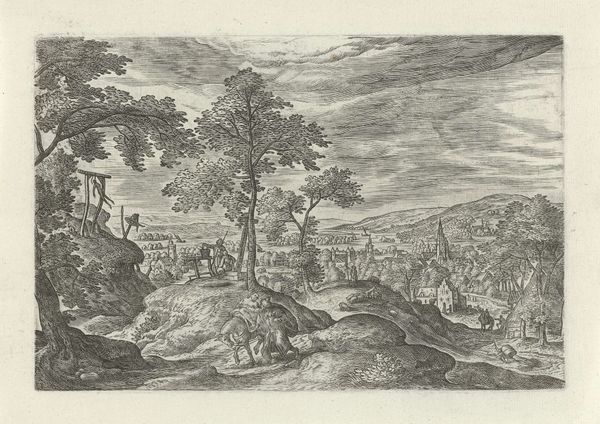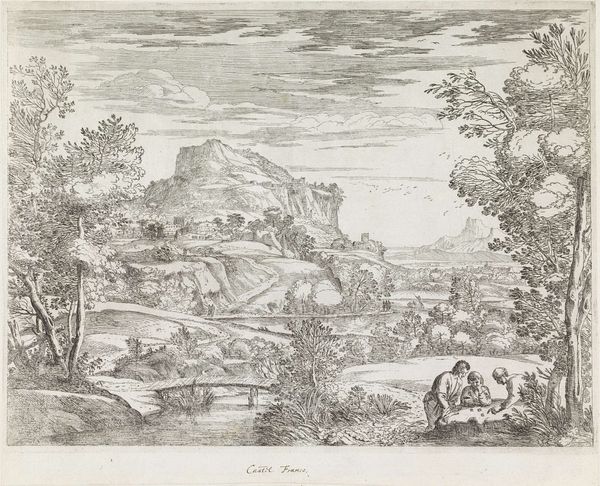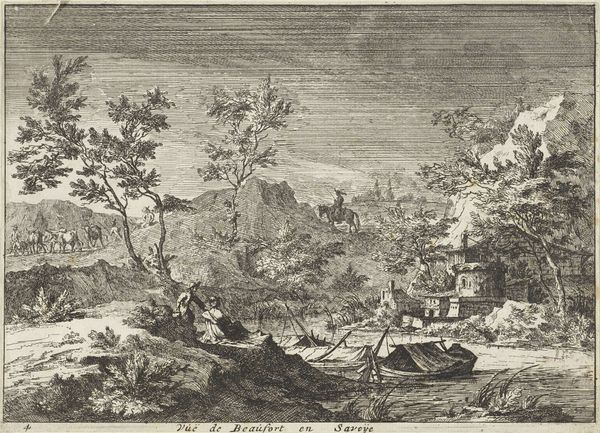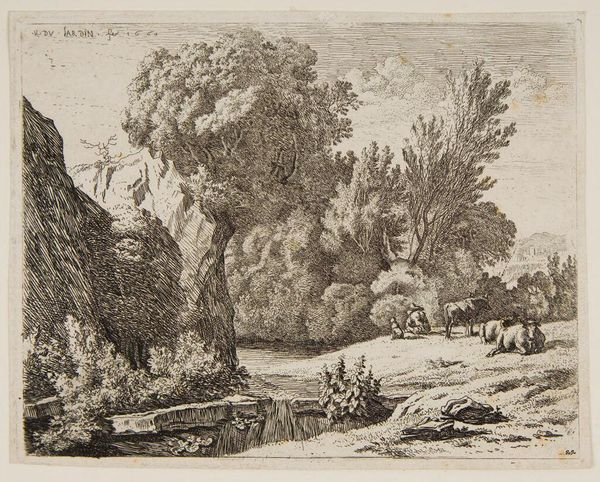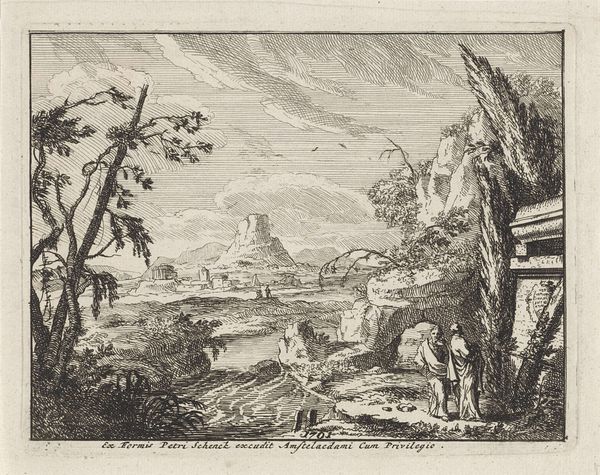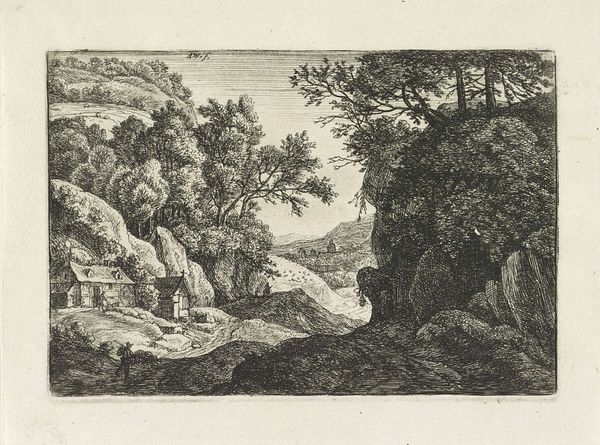
drawing, etching, ink
#
drawing
#
baroque
#
pen sketch
#
etching
#
pencil sketch
#
landscape
#
ink
#
pen-ink sketch
Dimensions: height 107 mm, width 162 mm
Copyright: Rijks Museum: Open Domain
This landscape print was made with an etching process; a metal plate is covered with a waxy ground, then scratched with a needle to expose the metal. It’s then dipped in acid, which bites into the exposed lines, creating grooves that hold ink. The plate is then wiped clean, leaving ink only in the etched lines, and pressed onto paper to transfer the image. The resulting print has a distinctive, linear quality, which the artist has used here to describe the rugged textures of rocks and foliage. Look closely, and you’ll notice the varied line weights, achieved by varying the pressure and thickness of the etching needle, and the length of time the plate spent in the acid bath. This isn't just a picture, it's a record of skillful labor and technical mastery, each line a testament to the etcher's craft. The print invites us to consider the social context of artmaking. The labor-intensive process of etching, requiring specialized tools and training, stands in contrast to the mass-produced images of our own time. By appreciating the materials and methods used, we can move beyond the image itself and see the print as a product of human ingenuity and skill, challenging any separation between art and craft.
Comments
No comments
Be the first to comment and join the conversation on the ultimate creative platform.
